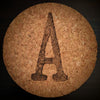If you hold up one of our candle jars, you'll notice it's slightly tinted green with a slight texture.
The signature and 4 ounce jars, along with the fabulous skull jars, are 100% recycled glass made in Spain. They are also food safe and dishwasher safe, so use one for a cold drink after your candle is gone!
Here's more information about how glass is recycled, and why purchasing recycled glass is important.
Glass is one of the most commonly used materials in the world, and its recycling is an essential component of sustainable waste management. The good news is that glass is 100% recyclable, and it can be recycled over and over again without any loss in quality or purity. In this blog post, we'll explore the process of how glass is recycled, from collection to the creation of new glass products.
Collection
The first step in the glass recycling process is collection. Glass can be recycled from a variety of sources, including bottles, jars, and even broken glass. Many municipalities offer curbside glass recycling programs, and some communities have drop-off locations specifically for glass recycling. Once collected, the glass is transported to a recycling center.
Sorting
At the recycling center, the glass is sorted by color. Clear glass is separated from green and brown glass, as these colors cannot be mixed in the recycling process. Any non-glass materials, such as plastic or metal caps, are also removed at this stage.
Cleaning
After sorting, the glass is cleaned to remove any contaminants. This is typically done using water and specialized equipment that removes labels and other materials that may be stuck to the glass. The glass is then crushed into small pieces called cullet.
Melting
The cullet is then melted in a furnace at temperatures ranging from 1400 to 1600 degrees Celsius. This melting process requires a lot of energy, but it is still more energy-efficient than creating new glass from raw materials. The melted glass is then poured into molds to create new glass products.
Creation of new glass products
The melted glass can be used to create a variety of new glass products, including bottles, jars, and even fiberglass insulation. Glass can be recycled indefinitely, which means that the cullet created from the recycling process can be used to create new glass products over and over again.
Benefits of glass recycling
Recycling glass has numerous benefits, including reducing the amount of waste in landfills, conserving natural resources, and reducing energy consumption. Recycling one ton of glass can save more than a ton of natural resources and prevent the emission of over a ton of CO2.
In conclusion, glass recycling is a crucial component of sustainable waste management. From collection to the creation of new glass products, the process of recycling glass is relatively straightforward and highly effective. By recycling glass, we can help conserve natural resources, reduce energy consumption, and minimize the amount of waste sent to landfills.

